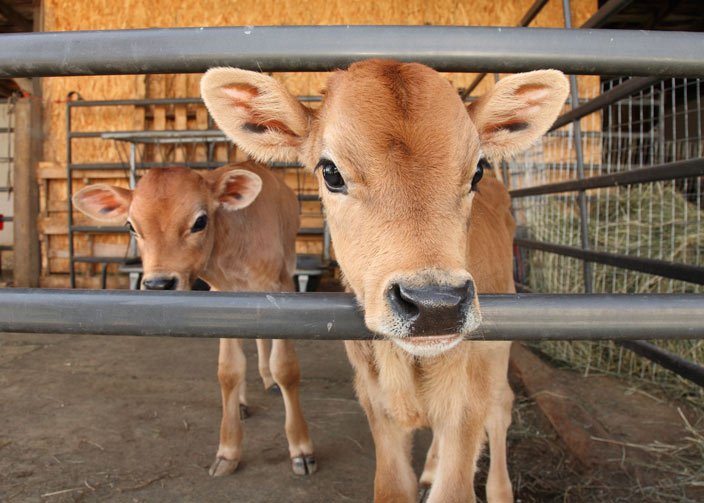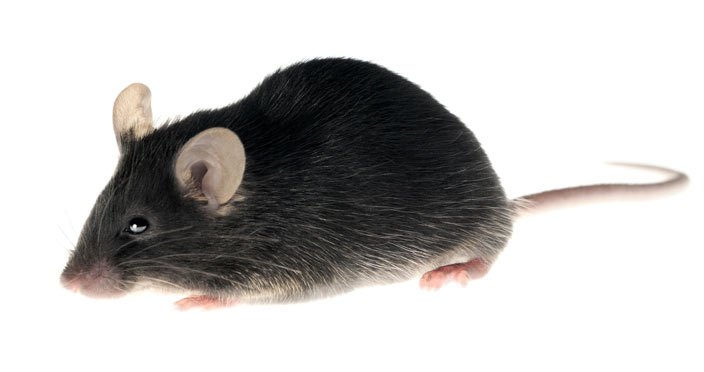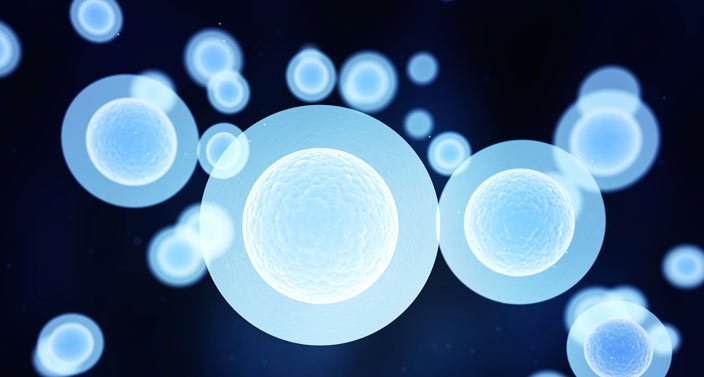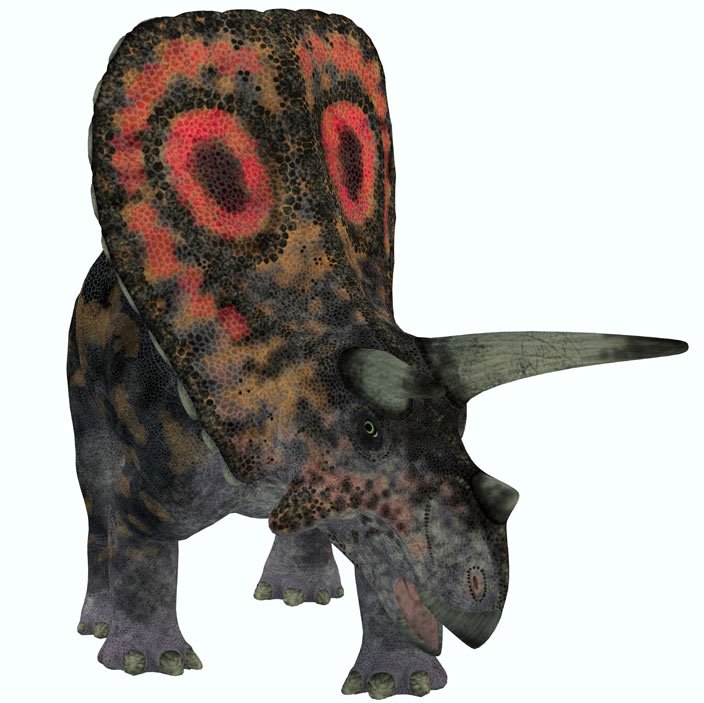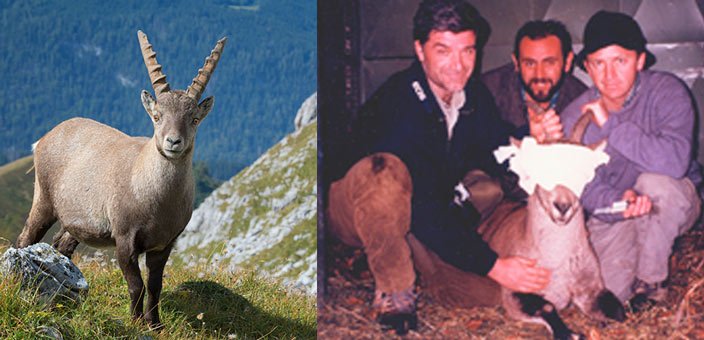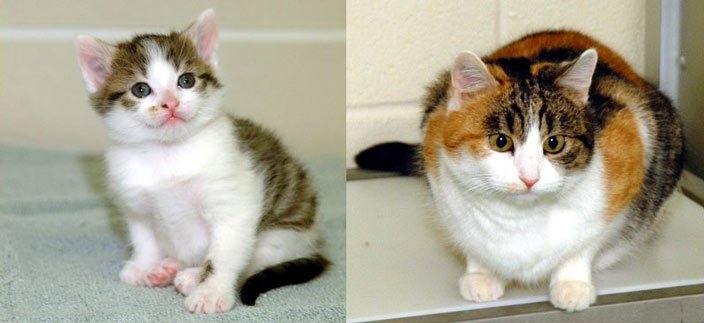If you really wanted to, and if you had enough money, you could clone your beloved family cat. At least one biotechnology company in the United States has offered cat cloning services for the privileged and bereaved. But don't assume that your cloned kitty will be exactly the same as the one you know and love. An individual is a product of more than its genes—the environment plays an important role in shaping personality and many other traits.
On December 22, 2001, a kitten named CC made history as the first cat—and the first domestic pet—ever to be cloned. CC and Rainbow, the donor of CC's genetic material, are pictured at the right.
But do you notice something odd about this picture? If CC is a clone of Rainbow—an exact genetic copy—then why are they different colors?
The answer lies in the X chromosome. In cats, a gene that helps determine coat color resides on this chromosome. Both CC and Rainbow, being females, have two X chromosomes. (Males have one X and one Y chromosome.) Since the two cats have the exact same X chromosomes, they have the same two coat color genes, one specifying black and the other specifying orange.
Very early in her development, each of Rainbow's cells "turned off" oneentire X chromosome, thereby turning off either the black or the orange color gene. This process, called X-inactivation, happens normally in females, in order to prevent them from having twice as much X-chromosome activity as males. It also happens randomly, meaning that different cells turn off different X chromosomes.
So like all female mammals, Rainbow developed as a mosaic. Each cell that underwent X-inactivation gave rise to a patch of cells that had oneor the other coat color gene inactivated. Some patches specified black,other patches specified orange, and still others specified white, due to more complex genetic events. This is how all calico cats, like Rainbow, get their markings.
CC looks different because she was made from a somatic cell from Rainbow in which the X-chromosome with the orange gene had been inactivated; only the black gene was active. What's interesting is that, as CC developed, her cells did not change the inactivation pattern. Therefore, unlike Rainbow, CC developed without any cells that specified orange coat color. The result is CC's black and white tiger-tabby coat.
